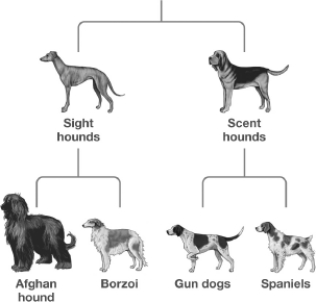A) and chimpanzees share a recent common ancestor.
B) evolved from chimpanzees.
C) and chimpanzees evolved from different organisms that lived in similar environments.
D) artificially selected for chimpanzees with hands during domestication.
F) A) and C)
Correct Answer

verified
Correct Answer
verified
Multiple Choice
Cultivation of corn over thousands of years has resulted in a modern corncob that looks very different from the tiny ancestral cob. Does this support the concept of evolution?
A) No. The change in corn was accidental and does not demonstrate the process of evolution.
B) Yes. The change in corn is an example of natural selection and demonstrates the process of evolution.
C) No. Artificial selection is driven by humans rather than natural selection and does not demonstrate what occurs in the wild.
D) Yes. Artificial selection demonstrates that evolution can occur, even though the driving force was humans rather than natural selection.
F) B) and C)
Correct Answer

verified
Correct Answer
verified
Multiple Choice
Examine the following figure. According to this figure, which two breeds have the LEAST similar DNA? 
A) Gun dog and Borzoi
B) Gun dog and Spaniels
C) Gun dogs and Scent hounds
D) Sight hounds and Scent hounds
F) A) and D)
Correct Answer

verified
Correct Answer
verified
Multiple Choice
A group of scientists proposed that mammals with fur that contrasts with their background are hunted more by predators than mammals with fur that blends in with their background. After running several experiments, the scientists found that dark mice were attacked 25 percent of the time in a dark habitat and 75 percent of the time in a light habitat. The light colored mice were attacked 25 percent of the time in a light habitat and 75 percent of the time in a dark habitat. These data
A) support the hypothesis because dark-colored mice are attacked more often in both light and dark environments.
B) support the hypothesis because dark-colored mice were attacked more in light environments and light-colored mice were attacked more in dark environments.
C) do not support the hypothesis because although dark-colored mice are captured more often in light environments, they are also captured more often in dark environments.
D) do not support the hypothesis because light-colored mice are attacked more often in both light and dark environments.
F) A) and B)
Correct Answer

verified
Correct Answer
verified
Showing 61 - 64 of 64
Related Exams